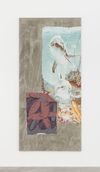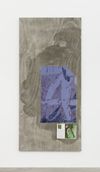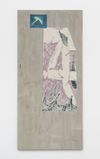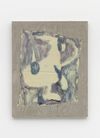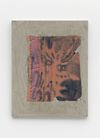Christian Andersen, Frederiksholms Kanal 28A, 1220 Copenhagen K, +45 2537 4101, info@christianandersen.net
Images
Press release
A Moto GP racer, none in particular comes to mind, is small of stature. To my knowledge, only men compete. They ride motorcycles and their size, not unlike a jockey, is supposed to help the machine propel them forward. Mass is in the way. The politics of these bodies mean that a given set of rules and subsequent goals come to define the ways in which the human form appears for individuals to compete and communicate within a field.
How do you compare individuals across time? And how do you compare them in time?
There are standard units, points, minutes, seconds. Standard figures, typically physically conditioned. A distribution of characteristic is necessary and brought together, they createorder. For the Moto GP this is in time.
So when de Chirico paints a greek sculpture that has lost its limbs does that make him a Greek sculptor? Certainly a sculptor. He speaks the language of a discipline, he compares those bodies as they appear and reappear. Intersubjectivity, namely the painter as a sculptor and vice versa, become the means in which redistribution questions the original means of distribution. It also means that these are objects in motion, not in the sense that they move from a to b but that they traverse time and space by generating language and affinity. This positions the exhibition format as the intersection of mutually permeable temporalities. A type of feng shui between production, installation, and reception in which these factors together carry on a public life.
This of course offers no solution for the athlete, except if that athlete is capable outside of athletics. But in the construction of an order -order itself is always at stake. The appearance of the body distributed is less of its affirmation than it is a question.
Milan Ther



